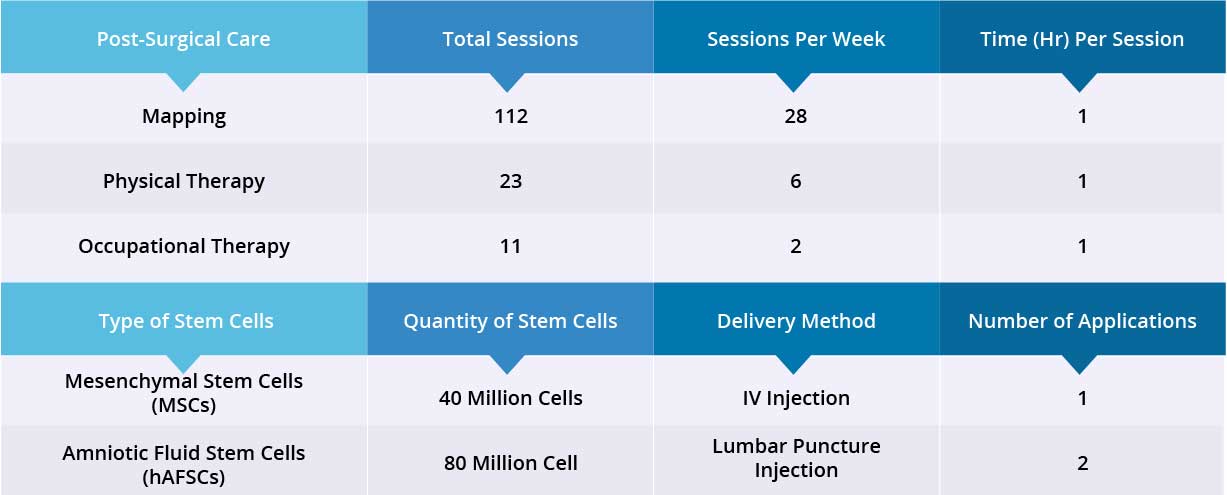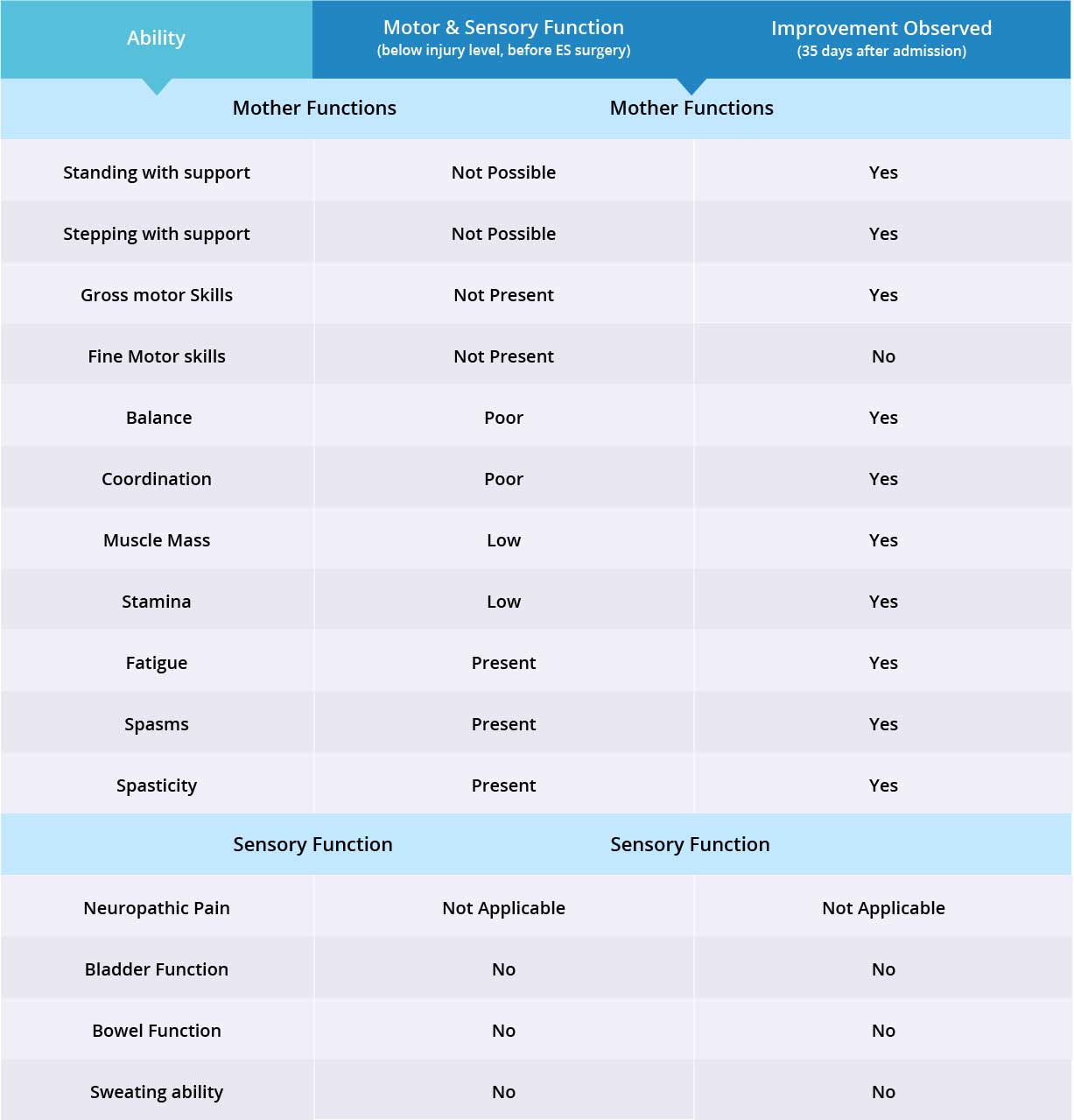Case Study
Patient G,
Male, Egyptian
Table of Contents
Patient Overview
Age at time of treatment: 18 – 25
Injury Level: C4, C5
Treatment Received: Stem Cells, Epidural Stimulation
Location of Treatment: Thailand
Time between injury and treatment: 2 – 5 years
Date of Surgery: 17/06/2018
Date of Discharge: 26/07/2018
Condition on Admission
Patient sustained a C5 fracture-dislocation from a dive into shallow water on August 2, 2015, with marked compression on his spinal cord. Patient is an incomplete quadriplegic, with limited upper limb function, and complete paraplegic, with total loss of motor function in lower limbs. He has limited hand and arm function, but lacks any significant finger function. Patient can control the upper back and is able to sit with minimal support, but has poor sitting balance. Patient does not suffer general spasms, spasticity or neuropathic pain, but does experience knee flexor spasms at night. Patient has no control of his bowel and bladder functions. He is dependent on assistance to perform normal activities in daily life.
Previous Therapies & Treatments
Patient underwent a corpectomy of C5 and fixation with titanium mesh between C4 and C6 vertebrae. In 2017, patient received allogeneic stem cells in the form of IV infusion. Minor improvements in affected areas were reported.
Patient sustained a C5 fracture-dislocation from a dive into shallow water on August 2, 2015, with marked compression on his spinal cord. Patient is an incomplete quadriplegic, with limited upper limb function, and complete paraplegic, with total loss of motor function in lower limbs. He has limited hand and arm function, but lacks any significant finger function. Patient can control the upper back and is able to sit with minimal support, but has poor sitting balance. Patient does not suffer general spasms, spasticity or neuropathic pain, but does experience knee flexor spasms at night. Patient has no control of his bowel and bladder functions. He is dependent on assistance to perform normal activities in daily life.
Verita Neuro Treatment Received
After a spinal MRI scan, EMG, and comprehensive blood work, patient underwent laminectomy and implantation of epidural stimulation device on June 17, 2018. The device is the ‘Medtronic Restore Advance 16-electrode MRI Compatible Device’. The surgery was completed without significant adverse effects and the surgical wound healed normally. No serious complications were reported during the hospital stay.
After the Epidural Stimulation surgery, patient received 112 Mapping sessions, 23 Physical Therapy sessions and 11 Occupational Therapy sessions. Patient also received 40 million Mesenchymal Stem Cells (MSCs) through one IV injection and 80 million Amniotic Fluid Stem Cells (hAFSCs) through two lumbar puncture injections. All three applications went well without adverse effects and no short-term or acute complications have been reported.
Device mapping and therapy were carried out after surgery for 35 days, then patient was discharged.

Results
- Motor Functions
- Sensory Functions
- Autonomic Functions
Patient is able to stand well using a hoist device, but cannot stand at a parallel bar due to weak upper body and no trunk control. With the support of hoist, patient is able to take steps. He can lift both feet and lock both knees very well. Mild improvement was noticed in coordination of both legs while stepping, but he does require assistance in foot placement. He has good hip and knee flexion in both legs.
Improvements were noticed in gross motor skills, including ankle, hip and knee flexion, and knee extension (kicking out) when epidural stimulation device is switched on. Patient did not notice any improvement in fine motor skills. Small improvements were observed in the patient’s balance, but he still requires support when sitting.
Patient is not able to control bladder and bowel functions, but he received regenerative medicine treatment so they will be reviewed in 3 months time. After 35 days, patient was discharged and will continue his physiotherapy back home.

Improvements are monitored in 15 targeted areas: 11 Motor areas and 4 Sensory areas. However, the number of targeted areas may vary depending on patient’s condition prior to admission. If patient does not experience symptoms in certain Motor/Sensory functions, or is not impaired in a specific targeted area prior to surgery, it is excluded from the report (Not Applicable). If there is progress in any given area — either mild, moderate, or significant — it is measured and reported as positive (“Yes”). No improvement, the existence of pain or spasms, or an inability to perform a measured function is reported as “No”.
Results Interpretation
In this patient, motor function improved in 10 out of 11 targeted areas when the epidural stimulation device was switched on. Patient has not noticed any changes in sensory function areas, and more feedback will be collected after 3 months to note any improvements made by stem cell treatment. Overall, improvements were recorded in 10 out of 15 targeted motor and sensory function areas.
